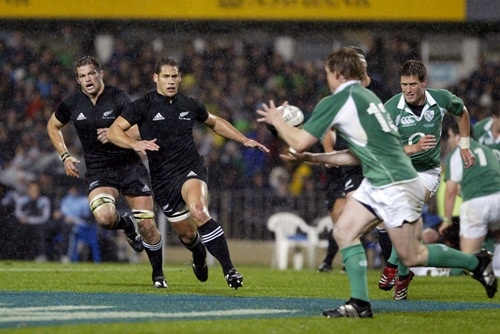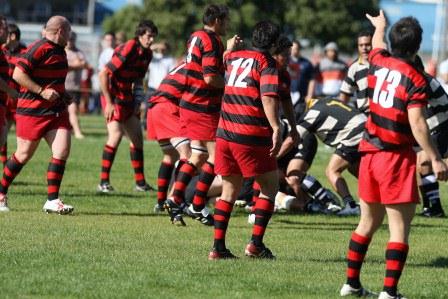- Rugby Toolbox
- Resources & Education
- Learn more
- Articles
- Snook on Coaching
- Structuring Phase Play on the Run
- Ruck & Run Drill
- Playing Philosophy – Ruck & Run Coaching Components
- Playing Philosophy – Spread the Forwards
- Playing Philosophy – A forward behind the ruck
- Playing Philosophy – Ruck & Run
- Playing Philosophy – An idea!
- The Breakdown
- Building Positivity [3]
- Building Positivity [2]
- Building Positivity
- Fitness and Game Related Activities
- Getting the Head Working
- Missiles are Dangerous
- Use of Video
- Winger Attacking Outside First-Five
- Player Profiling
- Selection
- Fitness Away from the Team Session
- Playing Philosophy (Pre season Prep)
- Coaching the Coaches
- The Rugby Coordinator and Pre-Season Preparation
- Why Not Use Tap Penalties More Often?
- Why Kick the Ball Down the Middle of the Field?
- Defending the 5 Metre Lineout Drive
- Scoring from the 5 Metre Lineout
- What are the Kicking Team Aiming to Achieve from Halfway Restart
- Should We Practice Scoring Tries?
- Team Culture
- Looking After Your Players
- Coach Survival Tips
- Under 11/13 – Backline Defence
- Under 11/13 – Ruck Defence
- Under 11/13 – Back Attack
- Under 13 – The Counter Attack
- Under 11/13 – The Maul
- Under 11/13 – Lineouts
- Under 11/13 – Decision Making
- Under 11/13 – Support Play
- Under 11/13 – Dive Pass and More
- Under 11/13 – Drop & Grubber Kick /Highball Catch
- Under 11/13 – Front on Tackling
- Under 11/13 – Contact – Getting Up – The Ruck
- Under 11/13 – The Coaching Session
- Under 8/10 – Using Space
- Under 8/10 – Kicking
- Under 8/10 – Contact and Picking Up the Ball
- U8/U10 Draw & Pass and Sidestep
- Under 8/10 – The Tackle
- Under 8/10 – The Coaching Session
- Under 7 – Test Your Coaching – Support Play
- Tap Pass and Swerve U7
- Ball Familiarisation; Passing & Receiving
- Activities for the Non-Contact Tackle
- Under 7 – The Coaching Session
- Coaching Teenagers – After the Ruck
- Coaching Teenagers – The Practice Session
- Coaching Teenagers – Best Practice
- Coaching Kids – Best Practice
- Plays from a Tap Penalty
- Running Plays from a 5 Man Lineout
- Driving Plays from a 5 Man Lineout
- Strike Plays at the End of the Lineout
- Back Strike Plays at the Lineout
- Wide Strike at the Scrum (2)
- Wide Strike at the Scrum
- Midfield Attack at the Scrum
- No 8 Plays at the Scrum (2)
- No 8 Plays at the Scrum
- The Cut Out Pass
- Skills to Penetrate (2)
- Skills to Penetrate
- Movements to Penetrate
- Patterns to Penetrate
- Contact and Continuity
- Keeping the Ball Alive Out Wide
- Pre Season Support Activities
- Checklist
- Understanding the game
- The Playing Philosophy
- The Lineout
- Overview
- Team Profile
- Start Now!
- Backrow
- Nine and Ten
- Rugby-related Fitness Activities
- The Psychological Edge
- Open Field Play
- Key Performance Indicators
- Improving Team Performance
- Backline Attack Concepts
- Tactics at Phase Play
- Playing Philosophy
- The ‘Stop Focus’
- Kick Attack
- Clearing the 22
- Wide Attack at Phase
- Player Focus
- Scrum Preparation
- Lineout Preparation
- Back Attack Preparation
- Sevens Preparation
- Sevens Kick Offs
- Sevens Scrum and Lineout
- Sevens Attack Patterns
- Sevens Defence
- 7's Selection and Game Planning
- Coaching and Leadership
- How the Game Evolves
- Changing Within the Game
- Learning from the Television.
- Using Tap Penalties Wisely
- Defence Drills
- Defence Drills for Tight Five
- Team Defence and TUB’ing
- Establishing Patterns from the Ruck
- Structured Phase Play
- Structuring Phase Play on the Run
- Coaching Roles
- Structuring a Close in Tackling/Defensive Session
- Coaching in Threes
- Attacking Back Play
- Kick Off Chase
- Wrap Around Back Plays
- Lineout Plans
- Looking and Learning
- Motivating Your Players
- Scrum Attack
- Refocusing the Team
- Monitoring the Progress
- Learning the Game
- Playing to the Laws
- Small is OK
- Decisions After the Tackle
- Improving Your Coaching
- Food for Thought
- More Food for Thought
- Passing & Catching
- How Ireland Nearly Beat the All Blacks
- The Progressive Coach
- Try Something New
- Encouraging Excitement
- The Mental Approach
- Where to Start
- Being the Best You Can Be
- Off the Ball Decisions
- Lineouts Difficult to Master
- Decisions on the Run
- Rucking and Rolling
- A Successful Approach
- Gaining Clarity
- Manipulation vs Physicality
- Beating the Drift
- To Ruck or Not to Ruck
- Stopping the Lineout Drive
- Fine Tuning the Planning
- It's a Running Game
- RugbySmart 2015
- Using the Shoulders
- Loosehead Prop / Tighthead Prop
- Position Specific – Hooker
- Position Specific – Lock
- Position Specific – Blindside Flanker
- Position Specific – Openside Flanker
- Position Specific – No 8
- Position Specific – Halfback
- Position Specific – First Five Eighth
- Position Specific – Second Five Eighth
- Position Specific – Centre Three-quarter
- Position Specific – Wing
- Position Specific – Fullback
Structuring Phase Play on the Run

Structuring Phase Play on the Run.
The previous two articles have provided some ideas on how to overcome the metronomic way the ball is being used from rucks with forwards hitting up time and time again, quite often resulting in the ball being turned over at the tackle. Hopefully some of you will have given these concepts a tryout and then developed them to suit your own team.
This third method is very much dependant on your team possessing a good TDM (Tactical Decision Maker) at 9 or 10 or preferably in both these positions. It will take a lot of practice time but if you have good intelligent players in these positions you should try this system as it has the flexibility to change from phase to phase as the team are on the ‘run’.
The basis of the plan is having the TDM calling the patterns from the third phase onwards, assuming that they are still required. This will bring more accuracy to what is happening as the game continues its course.
 The original call at the starter play will need to give directions as to the area of the field where the attack will be looking to get through and whether the sequence continues the same way or returns after the first ruck. This is the first two phases.
The original call at the starter play will need to give directions as to the area of the field where the attack will be looking to get through and whether the sequence continues the same way or returns after the first ruck. This is the first two phases.
The original call might be: Johnny – Car – X. This means the play will hit up in the middle of the field (Johnny) – continue the same direction (Car) - and three support players will run off No 9 inside, outside and behind (‘ X ‘ is receiving off 9)
As you can see there will be a number of calls and names that dictate where the ball is going and where the support players need to be.
For example the patterns may be determined as: A car name indicates going the same way / a truck name indicates a change of direction at the first ruck / a plane will indicate the pattern going wide from side to side. This will establish the first pattern in each players mind.
The support players will be guided to the correct part in the field with calls: ‘X” indicates three runners are available to work off 9 / ‘Y’ indicates the three runners are positioning to work off the first receiver (normally 10) / ‘Z’ indicates the runners are required in midfield or wider.
Also included as a call at the tackle/ruck zone might be a call such as ‘Bullet’ for a pick and go or a default call if players are not available and the ball needs further recycling in close.
All of this will require an intelligent TDM who can look forward and make a quick plan on the run as he is calling out the direction of the play and where he wants his runners.
Besides this calling system the players need to be coached in the key aspects that bind the plan together. Firstly there is the reaction to what happens at the tackle so that variations besides the normal ruck take place. Coaching the pop pass, the pick and go and latching will ensure that the attack is getting in behind the tackle line for example.
It will also be important to coach the support play for the ‘X’, ‘Y’ and ‘Z’ runners so that they understand the changes of angles, depth and pace, and where they are starting from to gain the maximum benefit from their support roles. The coach may even wish to run certain patterns based on the ball carrier so that the runners are not just running in lateral and straight lines.
There it is. If you think this is for your team make a plan now and give it a go.